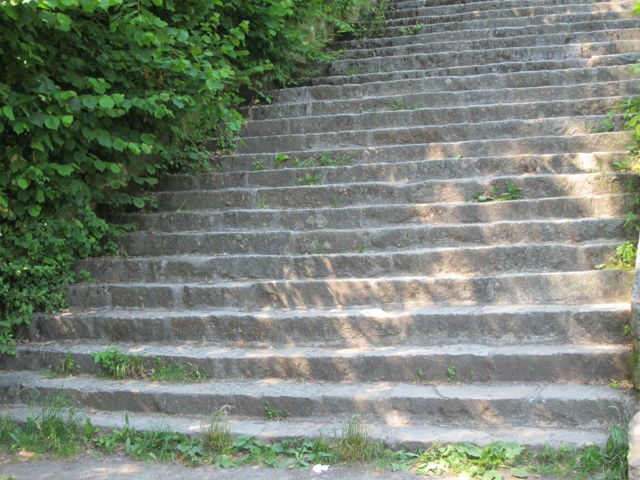Cor regaled us with yet another story. He has done so much to stop the spread of prejudice & stereotyping as he helped spread Anne Frank's story & raise money for the Anne Frank House in Amsterdam & the Anne Frank Foundation in New York City. He told us about risking the loss of a donation by a wealthy donor by pointing out the donor's obvious stereotyping. The donor had picked Miep Gies & Cor up at the airport. Miep worked in the annex when the Franks were in hiding & had risked her life bringing them food & supplies daily. She & Cor were quite the fund-riaising team. They were on their way from the airport when a driver pulled out in front of them & almost caused an accident. The donor commented, "I should have known it was an Asian driver." Miep, who was seated in the back seat behind Cor, poked him in the back to get him to speak up. He did not want to risk losing a donation, but Miep persisted until he pointed out that the remark was a form of stereotyping & that was one of the practices the Anne Frank Foundation was working to eliminate. The donor became aloof, & Cor thought he had lost the donation, but the next night at the event, the donor praised Cor from the podium for helping him teach a valuable lessson.
We spent several hours at Mauthausen Concentration Camp. I was dreading it as I had vivid memories of a very depressing former visit. The temperature today was 104 degrees & vvas most appropriate as we trudged through the camp sweating profusely again with plenty of water & fulll stomachs, thinking about the victims who suffered & died under the harshest circumstances.
In August 1938, five months after the annexation of Austria to the German Reich, the first inmates arrived at Mauthausen. The choice of location was governed primarily by the presence of granite quariries. The inmates were first put to work to provide an SS-owned company with building materials for monumental & prestiegious buildings in Nazi Germany. From 1942-43--as in all concentrataion camps--the inmates were enlisted increasingly to work in the armaments industry. Cor told us that people in the nearby village, especially carpenters, were expecting to gain employment when news of the camp spread among them. In the beginning carpenters were brought in to construct two barracks, but that was the end of empployment as they of course used slave labor from victims to build the rest of the camp.
We walkied down the difficullt 186 "Stairs of Death", the scene of many deaths as inmates were forced to carry heavy granite blocks up the stairs from the quarry to the camp. There are many stories of sadistic guards who, when prisoners reached the top of the stairs bearing blocks, were ordered to carry them back down. It was all part of the dehumanization proess.
Thousands of prisoners were murdered in the gas chamber, beaten to death, shot, & murdered by lethal injection. The majority of them succumbed through mistreatment & by being ruthlessly worked to death, while at the same time receiving scant food rations, clothing & medical treatment. Around 100,000 inmates died at Mauthausen, half of them in the last four months before the camp was was liberated by the American Army.
Our very quiet, sad group left the camp exhausted physically & emotionally & traveled several more hours arriving at 9:00 p.m. in lovely Prague. After a very late dinner, I fell into yet another feather bed.
